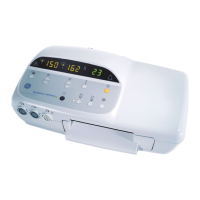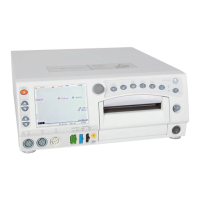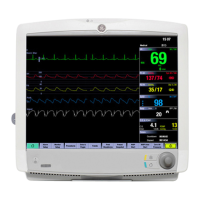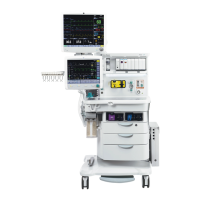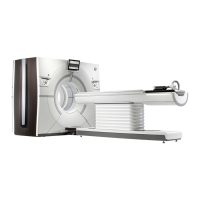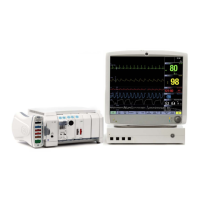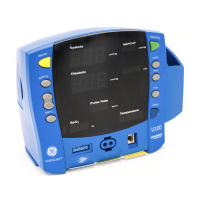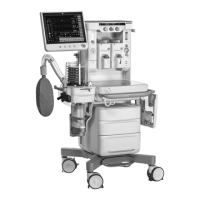4-52 120 Series Maternal/Fetal Monitor Revision B
2015590-001
Theory of Operation: UA/FECG Board
UA/FECG Board
Isolated FECG Circuitry
The isolated FECG section of this board consists of instrumentation amplifier U16,
amplifier U3, and right leg drive amplifiers U11. The right arm and left arm signals
from the patient are differentially amplified by U16 which provides a gain of 10 and
a single-ended output for the following stage. The output of U16 is high-pass
filtered at 1 Hz by the combination of C39, a 0.33 µF capacitor, and R58, a 499 k
Ω
resistor. Diodes D9 and D10 provide a rapid discharge path for C39 when the output
of U16 exceeds 0.6 V. This improves base line recovery time of the FECG output
during extreme base line shifts or fault conditions. After being high-pass filtered,
the ECG signal is further amplified by U3 which provides an additional gain of 100.
The total gain of the FECG front end is 1000 or 60 dB.
The summing points of the instrumentation amplifier U16 at pins 1 and 8 represent
the voltage present at the input leads. This voltage is combined by resistors R115
and R116, which provides the sum of the voltages at these two pins. For normal
differential signals, the voltage at these pins are of equal amplitude but opposite
polarity, which causes the output of the resistors to be 0 V. Common mode signals
however are of the same polarity and add together at the output. This common mode
voltage from the resistor network is buffered by the first stage of U11. This voltage
is inverted and integrated by the second stage of U11, which is fed back to the
patient as the right leg drive signal. The 332 k
Ω output resistor used on this stage is
used to limit the output current the stage is able to deliver to the patient under fault
conditions.
The two 22 M
Ω resistors, R51 and R52, connected to the input leads and to the –15
V supply, provide “leads off” detection for the FECG amplifier. When the ECG
electrodes are not connected to the patient, these resistors pull the inputs of the
instrumentation amplifier to –15 volts, saturating the input stages of this amplifier.
The resulting output from U16 is forced to 0 V, which prevents the system from
counting any noise or other signals when the leads are not connected. Connection of
the leads to the patient enables the right leg drive to pull down the inputs to a normal
operating range.
Resistors R112 and R114, and capacitors C34, C35, and C36 form a differential
low-pass filter for the input of the FECG amplifier. This prevents high-frequency
energy from affecting the operation of the amplifier, and limits the input current to
U16. Diodes D5, D6, D7, and D8 limit the differential input voltage of U16 to ±1.2
V.
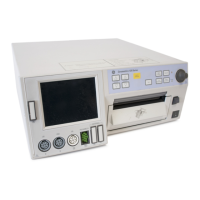
